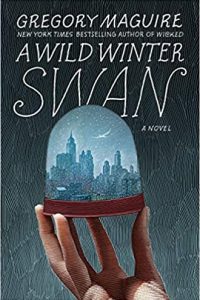Paul Di Filippo reviews Henry Kuttner
The Watcher at the Door: The Early Kuttner: Volume Two, by Henry Kuttner (Haffner Press 978-1893887824, $45.00, 712pp, hardcover) October 2016
 This exciting ongoing project, helmed by the indefatigable, knowledgeable and inestimable Stephen Haffner, will culminate someday with a third volume, Designs for Dreaming. But right now, Volume Two of the monument a-building delivers an even greater and more enjoyable reading experience than its predecessor. Nearly seven hundred pages of fiction by Kuttner from the short span of 1937 to 1940 finds the Golden Age Master even more deft and wide-ranging than in that first volume, Terror in the House, where apprentice Kuttner concentrated on Grand Guignol pieces and fake-supernatural spook tales. The sure hand and clever wit that would be fully on display under John Campbell’s Golden Age guidance appear in stronger and more lasting flashes here.
This exciting ongoing project, helmed by the indefatigable, knowledgeable and inestimable Stephen Haffner, will culminate someday with a third volume, Designs for Dreaming. But right now, Volume Two of the monument a-building delivers an even greater and more enjoyable reading experience than its predecessor. Nearly seven hundred pages of fiction by Kuttner from the short span of 1937 to 1940 finds the Golden Age Master even more deft and wide-ranging than in that first volume, Terror in the House, where apprentice Kuttner concentrated on Grand Guignol pieces and fake-supernatural spook tales. The sure hand and clever wit that would be fully on display under John Campbell’s Golden Age guidance appear in stronger and more lasting flashes here.
Before having a gander at selected items from this treasure chest of some thirty tales, let me reaffirm the solid bookman craftsmanship behind this deluxe hardcover, and the high quality of the ancillary material, this time from Robert A. Madle and Dr. Garyn G. Roberts. From the former, we get on-the-spot nostalgia and reminiscenses, and from the latter, perceptive insights into individual tales. Kudos to all contributors!
If we look at the first few tales in sequence, we can see some traits and patterns that continue to play out in the subsequent stories.
“We are the Dead” is a tale that relies on atmosphere. Two men in a cemetery encounter an eerie third fellow, who proves to be the ghost of the Unknown Soldier. The classicism of this ghost tale is married to a contemporary apprehensive sensibility towards the war-torn world of 1937, which has yet to plunge fully into the abyss. Also of note is the economy of scale—only six pages long—and the restraint. Not that Kuttner has utterly foresworn melodrama and pulp brio. But he’s getting there.
“The Case of Herbert Thorp” introduces another Kuttner hallmark: humor, either black or silly. In this case, a little of both, as a magazine editor gets his ghastly comeuppance. Next up, “The Transgressor” is in solid SF territory as we watch a neat time-travel paradox get enacted. We see hints of Kuttner’s mature self that will manifest in the brilliant “Time Locker.” Again, all these pieces have been told with not a wasted word.
When we come to “Hydra,” we recall that Kuttner was a Lovecraftian at the very start of his career, and in this solid expedition into astral travel with gruesome consequences, he shows that the Lovecraftian tropes and themes are not mere tics with him, but sympathetic material which he can rework to his own parameters.
“Murder for Fun” is one of several purely mimetic crime tales in this volume, and is typical of those selections, resembling the “Old Dark House” movies so popular at the time.
And so, purely by coincidence or chance, these first five stories lay down the template for the remainder of the contents. Atmospherically scary; humorously fantastical; solidly speculative; Lovecraftian; naturalistically suspenseful. Kuttner is busy honing his literary chops along these five axes, until that day when his alliance with wife Catherine Moore kicked his work into overdrive.
So what are the best remaining instances of each of the five categories?
The title story is truly creepy, as we watch the mental disintegration of the protagonist under the influence of bad dreams in a witch house. And some African voodoo evokes chills in “The Curse of the Crocodile.”
Kuttner’s Thorne Smith pastiches—“The Misguided Halo” and “All Is Illusion”—are rollicking examples of the Unknown magazine brand of screwball fantasy. “Improbability,” about a locus of non-causality, is less humorous but equally wild.
For bold and genuinely speculative SF, it’s hard to beat “’Telepathy Is News!’” which offers a believable Orwellian dystopia and some van Vogtian superman antics. “No Man’s World” reads like Will McIntosh’s Defenders in its account of Earth as a battleground for two warring species of aliens. And “World Without Air” is an effective Hal-Clement-style excursion.
Other Lovecraftian gems are “The Devil’s Brood,” utilizing HPL’s great trope of inbred familial deformities, and “Towers of Death,” the tale of soul displacement by a greedy old dying man.
Finally, the crime stories are all of the same magnitude, fun but not really inventive. I did like the absolutely daft notion behind “Corpse Castle.” A Howard-Hughes type figure wants to endow those who aided him in his hard-fought youth with some money, and he figures a cool way to do it is to drug them all, abduct them, and have them awaken in his private castle, which soon becomes a den of death!
The one tale I found semi-unsatisfactory was “When New York Vanished.” Overlong for the material, at well beyond a hundred pages, it reads like the early gosh-wow stuff of Jack Williamson, but more tedious. Kuttner must have been eager for a paycheck, to bloat this tale of inter-dimensional shenanigans up to this size.
But such a rare failure only highlights the excellence of the other stories, each of which shows Kuttner intent on delivering reading pleasure while improving his skills and expanding his range. There is also, in all his work, the sense of an author enjoying what he does—a quality which is impossible to fake, and without which a story becomes turgid and by-the-numbers. That was never true of Kuttner or his tales. I expect that Volume Three will find the young genius even more firmly in command of his material and talents.
One superficial final observation: Kuttner loved the designation “Baldy” for a character, using it over and over. Admittedly, hair loss is always an easily recognizable and funny character tag. It’s interesting then that he was able ultimately to transcend or uplift the gimmick into his tales of the “Baldies,” collected in Mutant.




